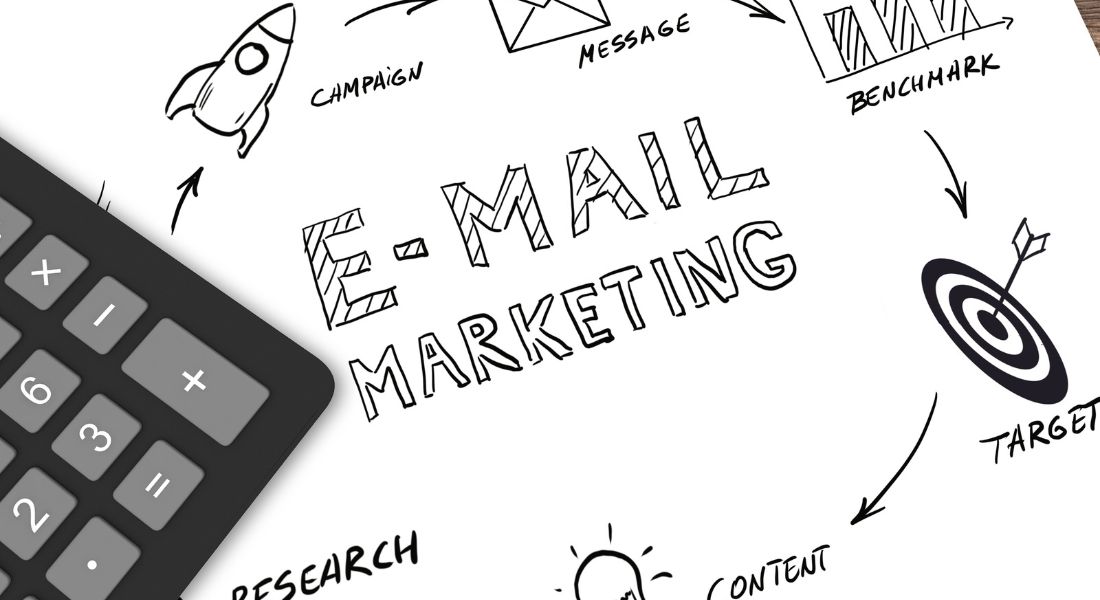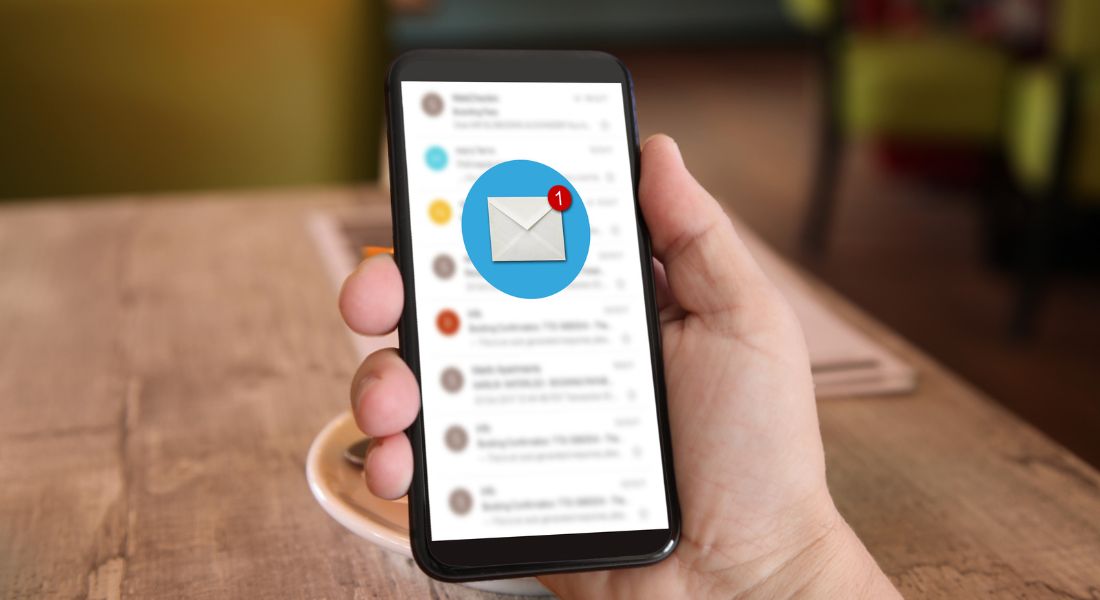Are you feeling stuck in the same old marketing routines? Are you looking to unlock a plethora of valuable benefits without breaking the bank? Well, look no further, because I’m here to show you why email marketing is the key to growing your business to new heights!
Email marketing is not only one of the most cost-effective forms of digital marketing available, but it is proven to have one of the highest ROI’s of any marketing channel. In addition to its bang-for-your-buck, email marketing carries numerous advantages over other forms of digital marketing.
With email marketing, you have the potential to directly reach out to your target audience at scale. You can drive engagement with your subscribers and establish yourself as an authority in your industry. If used wisely, email marketing can open the door to infinite possibilities, including increased website visits, boosted sales & conversions, improved customer relationships, and so much more.
So, are you ready to dive deep into the world of email marketing and unlock the many benefits waiting for you? Then let’s get started and discover how email marketing can help you grow your business now!
Quick Definition
Email marketing is one of the most cost-effective forms of marketing, allowing businesses to target customers quickly and efficiently. Additionally, it helps to build customer relationships, create brand loyalty, and improve connections between brands and their customers.
Post Contents
ToggleWhat is Email Marketing?
In today’s digital age, email marketing is a powerful tool used by businesses to stay connected with their customers and grow their business. But what exactly is email marketing? Simply put, it’s the use of emails to reach out and build relationships with potential and existing customers. It’s most commonly used to encourage people to take action; whether that be purchasing an item, creating an account, or subscribing for something.
Every day we are bombarded by emails vying for our attention, either convincing us to buy a product or providing us with helpful advice. What makes email marketing so powerful is that it can be both effective and cost efficient. Email campaigns will reach far more customers than traditional methods such as television commercials or posters, but they are cheaper to produce and implement. And unlike billboards or radio adverts, people can engage with your emails whenever they like.
But before you embark on any email campaign you should consider how it fits in with your overall strategy and if it serves a purpose within your organisation. Making sure that the content is relevant and interesting is key to any successful email marketing campaign – otherwise you could end up wasting time and resources.
The way we communicate with our customers continues to evolve, from print advertisements to online social media. However, email remains one of the most potent tools at our disposal and offers businesses great opportunities to increase engagement and revenue. Now that we have explored what email marketing is, let’s look at how we can unlock its potential benefits for our businesses.

Benefits of Email Marketing for Businesses
Email marketing has multiple benefits for businesses. The most clear benefit is that it helps build a strong relationship between the business and its customers or subscribers. Research shows that email is 40 times more effective than Facebook and Twitter in obtaining new customers, since it’s an individualised form of communication. Businesses have the ability to target different customer groups with emails based on their previous actions, which increases effectiveness.
Businesses also benefit from consumer insights through email marketing. Automated messages tracking open rates can help identify what types of emails resonate better with customers and even who opens them. This kind of analytics can be used to better understand customers and shape future campaigns for maximum effectiveness.
In addition to strengthening customer relationships, email marketing campaigns can be tailored to any business’s needs, such as staying top of mind with customers or announcing promotions or events. Running an effective email campaign can increase brand awareness, provide personalised content, and significantly grow a business’s reach and potential market size.
The benefits of email marketing are clear: it allows businesses to leverage existing customer groups and target them with meaningful content while gaining valuable consumer insights. To maximise these advantages and truly unlock the power of email marketing for their businesses, companies should strive to strengthen customer relationships by understanding their needs further and reaching out with relevant campaigns designed to engage customers and potential clients. Through this, businesses will be able to move forward from just utilising email marketing as a tool and use it as a major factor in their growth strategies moving forward.
- According to Statista, it was estimated that there were 4.3 billion active email users worldwide in 2020.
- According to Optinmonster, approximately 77% of consumers prefer to receive emails from businesses compared with other forms of communication.
- A study by Direct Marketing Association found that email marketing provides an ROI (Return on Investment) of over 4,400%.
Increased Reach and Engagement of Customers and Subscribers
Email marketing is an effective tool to increase the reach and engagement of customers and subscribers. It has become a popular form of communication as it lowers marketing costs, increases brand awareness, and provides real-time updates and information to its users. Email marketing campaigns enable efficient segmentation and targeting of users and can allow for personalization of data. Increased user engagement is key for any business; email marketing helps by providing timely notifications that improve accessibility while keeping customers informed.
When it comes to increased reach, email marketing offers the advantage of being cost-effective by reaching numerous recipients at once with minimal effort. By providing incentives such as discounts or bonuses, businesses entice potential customers into making purchases and signing up for their services. Additionally, newsletters are a great way to both engage with current customers and acquiring new ones since they are customizable to meet specific needs and goals.
Thanks to all these features, email marketing enhances customer loyalty toward their brand by forming relationships with consumers through content that interests them, letting your business benefit from deeper engagement over time. This makes it easier for marketeers to track the ROI on their campaigns, allowing for effective adjustments that maximise return on investment (ROI).
In summary, email marketing provides businesses with powerful solutions that can reach far beyond traditional mediums. Not only does it offer improved customer engagement but it also increases reach while encouraging repeat visits and conversions. This makes email marketing one of the most efficient ways to grow your business in terms of getting more customers and expanding ROI from advertising efforts.
Increased ROI from Advertising Efforts
The previous section discussed the immense benefits of email marketing in terms of its reach and engagement with customers and subscribers. However, another major benefit to consider is the increased return on investment (ROI) from advertising efforts. Email has been known to have one of the highest ROIs of any form of digital marketing, returning an average of $32 for every $1 spent.
This means that email provides businesses the opportunity to increase revenue using a fraction of the budget they may otherwise need for other forms of digital or traditional advertising. To put this into perspective, research shows that over 8 in 10 marketers saw an increase in their ROI when utilising email marketing campaigns compared to those who did not, showing its clear advantage as an advertising tool.
Furthermore, email marketing assists in creating stronger relationships and encourages more active engagement with customers. This puts companies in a better position to meet customer’s needs while also building brand loyalty and ultimately generating more sales through acquisition rate improvement.
Email marketing offers numerous advantages for driving ROI, however it’s important for businesses to be aware that most rewards don’t come overnight and require careful strategy planning and consistent effort. The adoption of such a strategy can provide powerful competitive advantages through increased response rates, improved customer relationships while still managing budget responsibly.
With all these advantages considered, businesses must now understand how they can efficiently use email campaigns towards their own growth and sustainability goals; moving us onto our next subsection – Benefits of Email Marketing for Senders.
Crucial Points to Remember
Email marketing offers a high return on investment, with an average of $32 for every $1 spent. It also assists in creating stronger relationships and encourages more active engagement with customers, leading to higher acquisition rates and better brand loyalty. However, successful email campaign strategies require careful planning and consistent effort for businesses to achieve their growth and sustainability goals.

Benefits of Email Marketing for Senders
Email marketing can help senders unlock the benefits of increased ROI from their advertising efforts. Unlike costly forms of direct mail and print advertising, it is typically more cost-effective for a business to simply send out an interesting and informative message compared to printing large amounts of physical advertisements at a higher price point and the risk of them being ignored or overlooked. Email marketing not only has considerable benefits in terms of budget efficiency but also presents an opportunity to target customers with specific messages tailored to their interests, which in turn can create even higher returns. Furthermore, email marketing enables businesses to conveniently maintain relationships with their existing customer base by keeping them engaged and informed about company news & events, coupons, discounts and new products or services. All of this adds up to the potential for higher engagement rates that can lead to more sales as customers are reminded to come back and explore what is on offer with your company.
Unlocking the digital advantages associated with email campaigns can deliver incredibly valuable resources that enable businesses to measure their advertising expenditure and track progress over time. Even subtle changes or additions in email campaigns can help manage customer expectations and provide insight into present customer bases unlike traditional methods. By periodically evaluating customer data from emails opened or clicked, enterprises can quickly identify popular topics, offers and gain valuable insight into consumer habits that can be applied elsewhere in business operations.
It is obvious why businesses should seek out the advantages email campaigns offer in order to boost their return on investment (ROI) while saving resources – understanding the metrics involved will be the next step toward unlocking the potential of these types of campaigns moving forward. With further research into customer data collected from email campaigns, companies can fully understand and improve the effectiveness of email marketing – leading to even greater success for all parties involved. As these valuable data points become available for interpretation, we will move onto examining how these insights can be leveraged for better ROI resulting from any marketing activities going forward.
Valuable Data and Resources from Email Campaigns
Having detailed records of customer averages and email open rates are just two key insights to garner when engaging in email campaigns. By understanding who is opening your emails or who is ending up buying your services, this valuable data obtained from email campaigns can help businesses drive their strategy directly. With the right analysis, companies can better understand the effectiveness of their campaigns over time. This in turn can provide them with a closer look at potential trends and consumer behaviour that emails can reveal. Coupled with resources such as automation software for managing newsletters, email marketing campaigns can become much more organised and cost-effective than ever before.
That being said, obtaining this data and utilising it may require technical knowledge that not all business owners may have. It’s important to either acquire the necessary knowhow or to outsource someone capable of providing you the data sets necessary to make the most out of your email campaigns.
By properly collecting and processing the data from email campaigns you gain a deeper insight into what works best for your brand and products. With this powerful information, businesses can significantly optimise both their strategy and budget for maximum results that will ultimately lead to increased sales figures and ROI growth. As such, acknowledging the importance of valuable data and resources from email campaigns is well worth its weight in gold when enhancing business growth over time.
Going forward, getting an eye-opening look at real-world examples of successful email marketing efforts may further help brands learn how to capitalise on effective strategies while avoiding pitfalls down the line.
Examples of Email Marketing Campaigns
Email marketing campaigns provide businesses with an invaluable resource for engaging customers and potential customers. Not only can businesses track metrics such as open rates, click-through rates, and conversion rates; they can also test different types of content, offers, and calls to action to create optimised campaigns that result in greater ROI. Looking at successful email campaigns can give businesses a great starting point for creating their own strategy and crafting emails that get results.
A well-crafted email marketing campaign should start with understanding the target audience and the goals of the organisation. Emails that are too long and wordy can overwhelm readers, while emails that are too sparse may not adequately communicate a message or call to action. Creating an email with the right balance of information is key to achieving success.
Additionally, emails should look serviceable on any device. With so many people relying on their phones for email messages, it’s important to optimise content for mobile viewings. There are several platforms available that make this process easier, such as MailChimp or Campaign Monitor.
Some examples of successful email marketing campaigns include Ralph Lauren’s “Big Pony Collection” campaign which featured bright colours and eye-catching graphics to engage customers while promoting new polo shirts; as well as GoDaddy’s “Share Your Story” initiative which used moving imagery and personal testimonies from happy customers to generate interest in web hosting services.
Both campaigns were effective in engaging their target audiences through emotional connection and appealing visuals. In addition, there was a clear call to action that further drove home the message and successfully compelled users to take action.
The importance of a well-crafted email campaign cannot be underestimated. Businesses should focus on crafting clear messages backed up with engaging visuals and compelling calls to actions in order to maximise returns on investment. Understanding both your target audience and your desired outcome is essential for creating successful email campaigns that drive conversions.

Common Questions and Their Answers
How do I set up an effective email marketing strategy?
Setting up an effective email marketing strategy begins with developing a comprehensive plan that considers the goals of your business, your customer base, and how to create an email content that resonates with them.
First, start by identifying who your customers are and what they want. Gather data on customer preferences, age groups and purchase histories. Consider aspects of segmentation like geography or number of purchases to define more custom audiences.
Second, develop an enticing content strategy for your emails. Tailor messages to each group and feature relevant topics like discounts or new products. Also make sure they are easy to read with bullet points, headers and visuals. Additionally, include a clear call-to-action and focus on generating leads or driving sales conversions.
Third, make sure to keep track of key metrics such as open rate, click-through rate (CTR), unsubscription rate and so on. This helps you understand which emails are working best and adjust accordingly as needed.
Lastly, remember that while developing an effective email marketing strategy may seem daunting at first, taking the time to design the right one can lead to greater customer engagement and increased sales for your business in the long run.
Key Questions:
Key questions for understanding the benefits of email marketing include:
1. What advantages does email marketing offer over traditional methods?
Email marketing offers several distinct advantages over traditional methods of communication. For starters, email is cheaper than paper-based direct mail campaigns and can even be automated, saving time and money. Furthermore, emails are trackable so marketers can measure their success across any type of message sent out. Finally, they offer high levels of personalization, as you can target messages to specific user segments based on demographics, location, or other data points.
2. How does effective email marketing help businesses grow?
Effective email marketing helps businesses grow in a number of ways. First and foremost, it allows marketers to foster relationships with current and potential customers by delivering relevant content directly to their inboxes. This has been shown to result in higher open rates, increased loyalty, and more repeat purchases from both existing and new customers alike. Additionally, emails offer the opportunity to reach out to people who may not have visited your website before, thereby expanding your customer base. Finally, effective email campaigns also provide a unique opportunity to collect valuable user insights about customer tastes and preferences over time that can then inform future product offerings or promotions.
What are the best ways to measure the performance of an email marketing campaign?
The best way to measure the performance of an email marketing campaign is to track open and click rates, conversions, engagement (total clicks, likes, shares, comments), return on investment (ROI), cost per acquisition (CPA), cost per click (CPC) and opt-outs.
First and foremost, tracking your email open rate can provide you with important insight into how subscribers are engaging with your emails. Your click rate tells you the number of successful interactions people have had with your message. Conversion rate will tell you how many customers have taken the desired action you specified in your email newsletter. Engagement is a valuable metric that shows you the total number of clicks, likes, comments and shares made by customers when interacting with your message. ROI helps you understand your return on investment made during the course of a campaign. CPA allows you to compare campaigns and figure out which ones are most beneficial for a given budget. CPC gives you insight into how many times someone clicked on each link in your email and lastly, the opt-out rate can tell you how successful your email was at retaining customers.
By utilising all of these metrics when evaluating the performance of an email marketing campaign, marketers can get a comprehensive view of how effective their campaign has been in reaching their target audience and sparking action.
What are the benefits of email marketing?
Email marketing is a powerful tool for businesses of all sizes. It allows you to quickly reach customers both current and potential, make announcements, inform them about new products or services, drive sales, and cultivate relationships. Here are some benefits of email marketing:
1. Cost-effective: Email marketing is much cheaper than traditional advertising methods like television commercials or direct mail campaigns. Since there isn’t a lot of overhead involved, the cost per individual contact is usually quite low.
2. Reach target audience: You can easily segment your contact list based on factors such as age, location or interests in order to customise your messages and ensure that they are reaching the right people.
3. Immediate results: Unlike other forms of advertising which can take days or weeks to reach customers and produce tangible outcomes, emails are seen almost immediately after being sent and you can measure the success through metrics such as open rates, clicks, or sales conversions with very little lag time.
4. High ROI: With email marketing you can easily track the return on investment by analysing open and click-through rates as well as sales conversions from various campaigns. This makes it very easy to adjust future campaigns in order to get better results and maximise return on investment (ROI).
What are the advantages of email marketing compared to other marketing strategies?
The advantages of email marketing compared to other marketing strategies are numerous. First, it is significantly cheaper to send emails than to launch campaigns in traditional media outlets such as television and radio. Second, you can target customers based on who they are, their preferences, and behaviour – something that’s not always possible with traditional marketing channels. Third, emails offer the opportunity to personalise content and engage customers with timely messaging. Email also provides easy access to click-through rates that measure effectiveness, and a higher return on investment (ROI) than many other marketing channels. Finally, email can serve as an outreach tool for establishing new customer relationships; customers may be drawn in by interesting offers or engaging subject lines.





